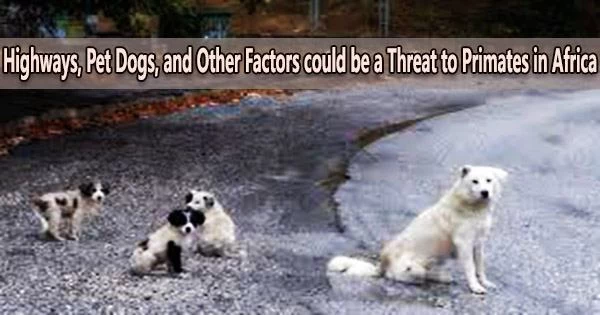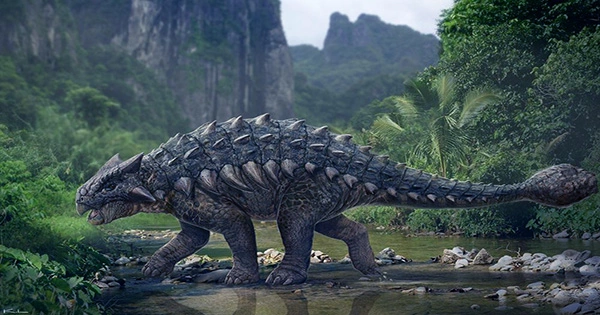Two recent studies found that non-human primates living in Africa are being negatively impacted by many aspects of human civilization, including power lines, roads, and even pet dogs.
The findings result from a collaboration between the University of Colorado Boulder and three South Africa-based institutions: the University of Venda, Lajuma Research Centre and the conservation organization the Endangered Wildlife Trust (EWT). They examine the causes of wild animal deaths in South Africa in an almost forensic manner.
The country is home to five species of non-human primates, including greater (Otolemur crassicaudatus) and southern lesser (Galago moholis) bushbabies. Some of these primates are so little that they may fit in the palm of your hand and spend the most of their time in trees.
In one study, researchers at Lajuma under the direction of Birthe Linden examined hundreds of incidents nationwide in which non-human primates were killed on power wires or on roadways. The researchers examined the rising dangers that domestic dogs cause to animals in a companion publication.
The study demonstrates that the dangers to monkeys, apes, and other non-human primates are not always obvious, especially for less well-known species like bushbabies.
“Bushbabies, especially, are an example of species that may be having problems, but we don’t know what they are until we go looking,” said Michelle Sauther, co-author of the two studies and professor of anthropology at CU Boulder.
For her, the results border on personal.
Sauther and her colleagues spent more than ten years studying bushbabies in South Africa. During that time, they got to know one guy, in particular a larger bushbaby with one eye they called Bruiser because he reminded them of a retired prizefighter.
Then in 2019 Bruiser, who had bad and missing teeth, tried to move on the ground to reach a fig tree with easy-to-grab fruit. A pet dog found and killed him.
“These are small stories,” Sauther said. “They’re not the big stories of conservation, but they really do matter, especially as we have no good data on bushbaby mortality and thus cannot easily judge their conservation status.”
However, they are minor incidents that probably affect practically all non-human primate species on the continent as a whole, not just in South Africa.
“We found that all South African non-human primates are in one way or the other impacted by human linear infrastructure, such as power lines or roads,” Linden said.
Roadkill on the rise
On her nearly daily journeys to the University of Venda in the South African Soutpansberg Mountains, Linden, a primatologist from South Africa, initially developed an interest in the covert threats to monkeys.
She kept seeing samango monkeys (Cercopithecus albogularis) run over on the side of the road. These monkeys are listed in the “Red List of Mammals of South Africa, Swaziland and Lesotho” as “vulnerable,” one step up from “endangered.”
“It’s one stretch where the road is quite close to indigenous forest, which is where samango monkeys typically live,” Linden said.
She wondered if a lot more non-human primates could be dying as roadkill than researchers suspected. South Africa is home to more than 675,000 miles (1,090,000 kilometers) of roads and power lines and the number keeps climbing.
Linden and her coworkers used a variety of data sources to investigate this all-encompassing menace. These include Road Watch, an EWT-developed citizen science software that enables anyone in South Africa to report roadkill.
The scientists found 483 instances of primates killed near power wires or on highways, some of which were from the late 1990s. Species included the two bushbabies, samango monkeys, chacma baboons (Papio ursinus) and vervet monkeys (Chlorocebus pygerythrus).
Next up, Frank Cuozzo of the Lajuma Research Centre and a research fellow at the University of Pretoria’s Mammal Research Institute led the group in exploring a different kind of peril: domestic dogs.
Greater bushbabies like Bruiser have been killed by dogs in South Africa 13 times since 2014, according to study. In one instance, they released dogs on purpose to chase down a bushbaby that had strayed too close to a settlement.
“These reports are clearly a sliver of what’s actually happening,” said Cuozzo who earned his doctorate in biological anthropology from CU Boulder in 2000. “It’s happening in the towns and suburban areas, in the rural areas, the reserve areas, and it’s happening far more than anyone would think.”
Why did the monkey cross the road?
The researchers are unsure of the exact impact that domestic dogs, electricity lines, and roads are having on the population of non-human primates in South Africa and the bordering countries. Nonetheless, they contend that it is crucial to monitor these fatalities, particularly for species who are already struggling to survive due to climate change and habitat loss.
Wendy Collinson-Jonker, co-author of the infrastructure study and a researcher at the EWT, noted that these problems are widespread, but the fixes may be surprisingly simple.
Research have revealed that “canopy bridges,” such as a rope bridge suspended between trees, allow monkeys and other forest creatures to securely hop across roads.
By being cautious not to leave food out, especially at night, people can also deter canines from approaching monkeys.
“We know the solutions,” Collinson-Jonker said. “It’s a case of now getting them implemented.”
As for Bruiser the bushbaby, Sauther noted that his story ended with a small bit of consolation. The crew was able to locate his body and gather X-rays that provided a fuller understanding of his more than ten years of existence, including the arthritis that had developed between his joints and probably caused him to descend to the ground.
“We were able to document his whole life story,” Sauther said. “We knew him right to the end.”
















